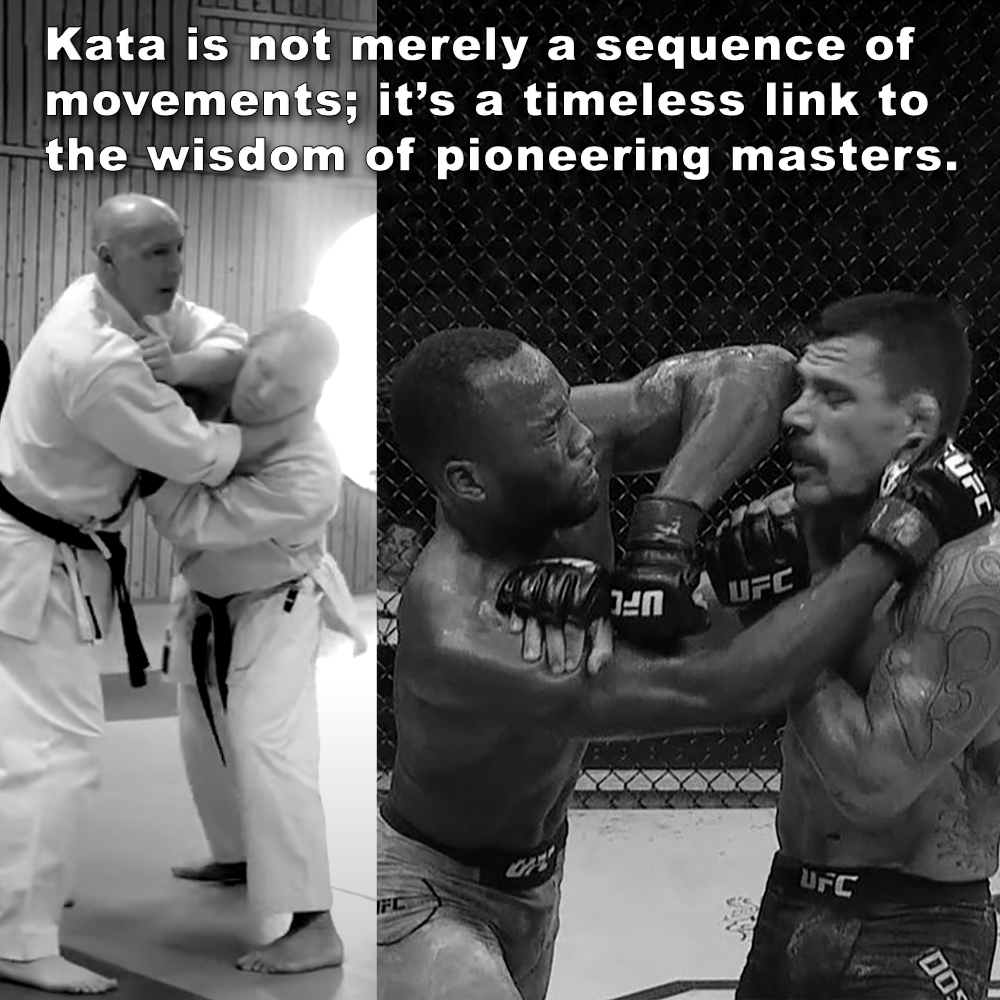
(Approx 2 minute 32 second read)
Kata is often viewed as outdated, irrelevant, and, from many comments I receive, totally misunderstood.
.
It’s important to remember that kata were created in a time without social media, video, hardly any photography, and no books or artwork on the subject.
.
Most teachings occurred behind closed doors to only a select few, with teachers having very few students, some just a single family member or two.
.
Let’s get to the bottom of why kata exists.
.
The foundation of any kata is the two-person drill. This, I believe, is what most people don’t understand.
.
Ignore bunkai for a moment. Why? Because bunkai is the analysis of the kata; we want to get to a place before that.
.
Imagine there are no kata yet. It’s just the drills being practiced.
.
Some of the drills could comprise ways to defend against a grab or a push; others may defend against many different strikes.
.
Once students were introduced to the drills, the teacher, just like today, would ask them to practice alone.
.
How would you do this on your own?
.
Kata. Often translated as “form,” it can also mean “the way of doing” something. Therefore, it was the way of practicing and remembering the drills when alone.
.
I receive many comments that say something like; “Good luck fighting with your kata.” This misunderstanding is widespread.
.
Kata are repositories of information, but many view them very differently.
.
They are not just basic techniques repeated in different directions fighting imaginary opponents. They tell a story, or perhaps better described as an instructional manual.
.
Each kata has a different purpose, they don’t all teach the same thing. Remember, the pioneers of karate would only use one or two, not the many we have today.
.
The teacher would have his own system, embedded within the kata, with an emphasis on what he deemed necessary for himself and his student.
.
I’m often told that MMA is the ultimate fighting system. While this may be true today, when kata were created, they were the method of the time for civilian defense, not sport.
.
What many people fail to understand is that you do not fight with kata following every movement from beginning to end. You select the “drills” or movements within for the moment you need them.
.
For example; I was watching an MMA fight between two experienced fighters. One was pushed against the cage. The aggressor located the other’s head with an open palm at the back of his head, then struck with a round elbow. In karate, this is ‘mawashi empi uchi,’ found in many kata, such as ‘Naihanchi.’
.
It was textbook, a very effective technique.
.
Do you see where I’m going with this? When you extract techniques or combinations from modern fighting disciplines, you see the same techniques within kata. The only difference is kata shows the whole system, created for a student to remember.
.
Understanding kata this way can shift your perspective. It is not an archaic practice but a sophisticated method of preserving and transmitting knowledge without any other medium, other than simply practicing in a confined space on your own.
.
To those who question the practicality of kata in modern times, consider this: kata offers a foundation upon which techniques can be built, adapted, and perfected. It cultivates an understanding of the deeper principles of combat, they are a living repository of information adaptable and relevant across generations.
.
Rather than dismissing kata as outdated, appreciate its historical significance and practical applications. Kata is not merely a sequence of movements; it’s a timeless link to the wisdom of pioneering masters, providing insights as relevant today as they were then.
.
